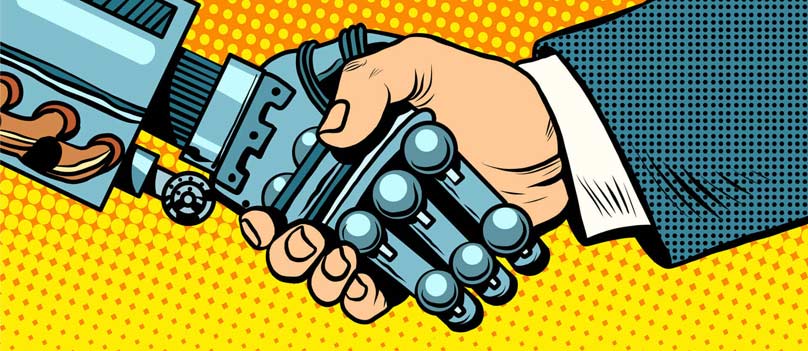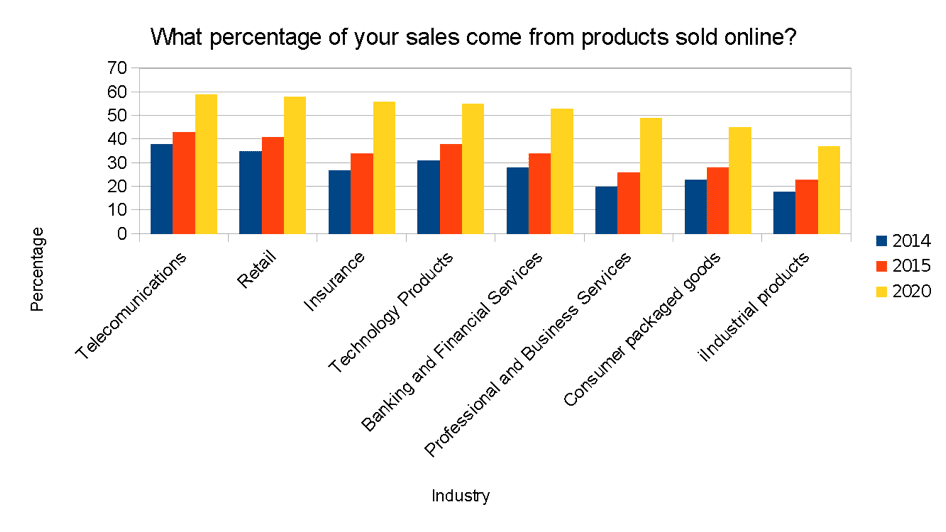Artificial Intelligence. A buzzword that immediately makes us picture self-aware computer networks taking over the world, or highly intelligent robots waging war against humanity itself. Thankfully, this is well beyond the realms of reality and still a thing of science fiction. The idea that AI is somehow a hostile piece of technology that could potentially destroy the world as we know it is a widespread misconception. A misconception fueled by captivated human minds and spread across to the general public, the technology industry and even within academic communities. But this does not mean AI is not among us. On the contrary, Artificial Intelligence has well and truly arrived, and is changing the world as we know it, for the better.
Think of AI as a tool to serve us. Although not quite apparent, it has already crept into our everyday life in various forms such as Virtual Personal Assistants, aspects of Online Customer Support, advertising and even video games just to name a few. Companies have realized it’s potential and have already invested millions into AI research for underlying business integration. But the fact of the matter is, AI is still at its infancy, and the waters are still largely untested. So the question remains, what will it take for industry wide adoption?
The early movers in AI are the usual suspects. The cutting-edge, cash-rich tech giants like Google, Facebook, Microsoft and Amazon and companies like Netflix to a lesser degree, have caught mainstream attention with their AI research. Not so long ago, Google’s AlphaGo managed to beat the Go world champion. The significance lies in the possibility of a more widespread set of use cases for the technology that made it all possible. In contrast, Deep Blue the chess engine that famously beat Garry Kasaprov was really good at chess, but useless at everything else. Amazon is not only transforming eCommerce, but is also pushing towards the grocery industry through its emerging initiative Amazon Go. The idea is to eliminate the need for a traditional checkout system with the help of computer vision, sensor fusion and deep learning. Microsoft, another big player in the field of AI is actively pursuing a General Artificial Intelligence that can effectively address problems in a range of different areas. The tech giants have taken the first steps, but keenly watching on the sidelines are the smaller, less tech-savvy firms trying to identify what might be genuinely valuable for them, going into the future. After all for businesses, AI adoption boils down to whether it can provide a good ROI.
In futurist William Gibson’s own words, “The future has arrived — it’s just not evenly distributed yet.” Clearly, AI adoption is not going to be uniform across business sectors. But what is widely agreed upon and is of paramount importance is that business owners do not ignore it. Promising research has shown the potential for disruptive changes in fields such as healthcare, transportation, marketing, manufacturing, entertainment and even climate change. It is important to try and stay ahead of the curve or be at risk of losing out in the long run. Having said that, there are still very real hurdles that has to be overcome for AI to reach its true potential across all industries. One such challenge lies in the very lifeblood of AI, that is data.
Data powers AI. Training algorithms to be good at something requires volumes and volumes of data. So it is no coincidence that the leading AI researchers in the industry have troves of continuously evolving data at their disposal. Facebook has publicly announced that it processes 2.5 billion pieces of content and 500+ terabytes of data each day. Google has billions of search queries running through its servers on any given day. The sheer volume, growth, and accessibility of data in recent years have been a driving factor towards the advancements seen in the field of Artificial Intelligence. However moving forward, this is a major source of bottleneck for industries and business sectors that are less focused on digitized, data-driven work. Not every company has the capacity or the means to gather and store data at the level of say, Facebook or Google. Not every business sector generates large enough quantities of data that could be channeled towards AI development. Take healthcare for example. Diagnosis support for doctors is an area that has seen significant progress in recent years. But gathering the data required to further this research has proved to be problematic. Partly, the problem is ethical due to the sensitive nature of patient data that might be required for research work. Another problem lies in the traditional nature of the industry, which has not embraced digitization as readily as some others have. The end result is, of course, data lacking in both quantity and quality.
Today, AI is poised at an interesting position. The world has come to realize the potential impact it could have on a wide range of fields, yet does not completely understand where the roads could lead to. There’s exciting developments but the biggest opportunities are still untapped. Some companies have taken giant leaps while some have taken more conservative approaches. The immediate future may churn out solutions to business problems that will require substantial pilot programs before being industry ready. Statistics show that although many business leaders believe a massive cross-industry impact is possible, there is still a sense of reluctance within businesses to move into early adoption. Reasons for this could range from budgetary restrictions to availability of in-house talent and talent acquisition.
The bottom line is, in Artificial Intelligence we have a general-purpose technology with the potential to change the world as we know it. What this change may bring along is still up for debate. Expert opinions range from a fully fledged sentient Artificial Super Intelligence to more realistic real-world applications. The trajectory of AI is such that neither can be disregarded. But what we do know is the journey ahead promises to be one of a lifetime. So let’s enjoy the ride.






ROLE DESCRIPTION
We are looking for a Membership Manager to join the company and take on one of the most opportunistic roles the industry has to offer. This is a role that allows for you to create and develop relationships with leading solution providers in the enterprise technology space. Through extensive research and conversation you will learn the goals and priorities of IT & IT Security Executives and collaborate with companies that have the solutions they are looking for. This role requires professionalism, drive, desire to learn, enthusiasm, energy and positivity.
Role Requirements:
Role Responsibilities:
Apex offers our team:
Entry level salary with competitive Commission & Bonus opportunities
Apex offers the ability to make a strong impact on our products and growing portfolio.
Three months of hands on training and commitment to teach you the industry and develop invaluable sales and relationship skills.
Opportunity to grow into leadership role and build a team
Extra vacation day for your birthday when it falls on a weekday
All major American holidays off
10 paid vacation days after training period
5 paid sick days
Apply Now >>